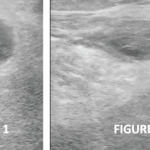
whitehoune/shutterstock.com
WASHINGTON, D.C.—Successful management of pain remains a challenge for rheumatologists. Five research abstracts presented at the 2016 ACR/ARHP Annual Meeting in a session titled Pain—Basic and Clinical Aspects offered new insights on pain sensitization, and the risks and effects of various pain therapies.
Knee Pain After Surgery
Can we predict which patients will have longer-term pain after total knee arthroplasty (TKA)? The study, “Post-Arthoplasty Pain Trajectories After Total Knee Arthroplasty and Their Association with 6- and 12-Month Pain,” looked at possible associations between early, postsurgical pain trajectories and lingering pain, said lead author Jasvinder A. Singh, MD, MPH, professor of rheumatology and clinical immunology at the University of Alabama, Birmingham.1
Although TKA usually is effective at treating pain and function problems, “about 15% of patients who undergo TKA have residual, moderate-to-severe joint pain that persists two to five years after the procedures,” said Dr. Singh.2 “Our thinking was that pain trajectories may be important. We wanted to look at them to understand what to expect in the future.”
Data from the Function and Outcomes Research for Comparative Effectiveness in Total Joint Replacement and Quality Improvement (FORCE-TJR) database, a nationwide cohort of 28,000 U.S. patients undergoing TKA, was used for the study. First, researchers assessed pain severity on a scale of 0–10 for 659 patients at two and eight weeks after surgery. Participants were 64.5% female and 66.5% age 65 or older. Two pain trajectories were evident: 72% were pain responders, or their pain decreased meaningfully after TKA; 28% were nonresponders.
‘After 12 weeks of DMARD treatment, regional cerebral blood flow in the hand pain condition decreased to levels similar to that of the controls.’ —Dr. Lee
Using patient-reported Knee Injury and Osteoarthritis Outcome Scores (KOOS), “pain trajectories at eight weeks were statistically significantly and clinically meaningfully associated with KOOS scores at six and 12 months,” said Dr. Singh. In KOOS, zero represents extreme knee pain or problems; 100 signifies no pain or problems. Mean KOOS scores for fast pain responders were 87.3 at six months and 90.2 at 12 months, said Dr. Singh. Slow responders’ mean KOOS scores at six months were 74.5 and at 12 months were 77.7. Charlson Comorbidity Count 3, and preoperative physical and mental health scores were also significantly associated with six- and 12-month pain outcomes, he said.
Intervening early to treat postoperative pain may lead to better outcomes, although “this study did not collect pain data during the inpatient stay, or the first week after TKA, which may be the most important time,” said Dr. Singh.
Why Some Pain Persists
Lower levels of pain sensitization in patients with osteoarthritis (OA) are associated with lower levels of progression to constant pain, according to “Relation of Pain Sensitization to the Evolution from Intermittent to Chronic, Persistent Pain in Knee Osteoarthritis: The Multicenter Osteoarthritis Study.”3 The abstract was presented by coauthor Tuhina Neogi, MD, PhD, FRCPC, professor of medicine at Boston University, in place of lead author Jia Liu, MD, who was on maternity leave.



